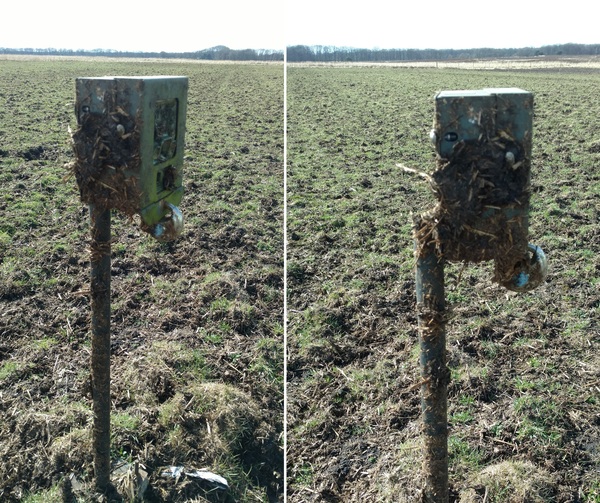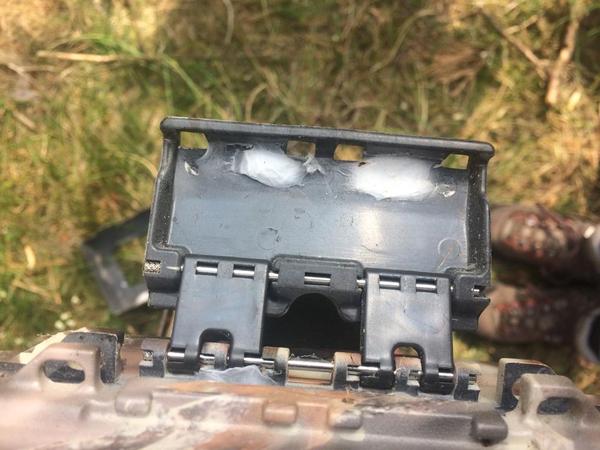Exposed cameras
Perhaps unsurprisingly, the wildlife cameras that are in the Park do not always remain clean. Far from it, in fact. All 70 of them are checked every 1,5 month by employees or interns of the Hoge Veluwe, but in the meantime a lot can happen. Sometimes the cameras become so covered in dirt and mud that it covers the whole lens. It also seems to be a favourite spot for birds to sit and ‘do their business’. On top of the cameras they can take nice rest while having a good overview of the area, making it a popular landing spot.

It will probably not surprise you that a dirty camera does not lead to the most beautiful nor scientifically relevant pictures, which is a shame because in this way we miss out on important data. This is why as part of her academic internship, biology student Anne Vader sometimes finds herself scrubbing manure of the cameras. “It all sounds very nice, doing fieldwork and checking all the camera’s, but sometimes you literary find yourself cleaning up someone else’s shit.” Good work in the name of science, Anne!
There are other visitors of the cameras that cause less harm. For example, we often find cocoons of spiders when we check the cameras. Spiders make these sticky and fluffy creations to protect their eggs from e.g. dehydration. The corners of the camera traps seem very suitable. This does no harm to the camera at all. However, it can be an unpleasant surprise to the person checking the camera, leaving him or her with a few sticky fingers.

The cameras in the Park are also exposed to all kinds of weather conditions. Unclear images are often the result of water drops, condensation on the lens or foggy weather. Usually this disappears on its own within a couple of hours. In these cases the cameras are thus only 'blind' for a short while.
Multiple volunteers have already made a note of similar vague images in the Snapshot Hoge Veluwe forum. The team will soon get together and discuss the addition of options like ‘foggy or unclear image’ in the classification screen, but more information on this will follow.
Written by: Anne Vader, Jonathan Filius en Meia van der Zee (interns De Hoge Veluwe)